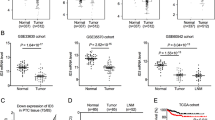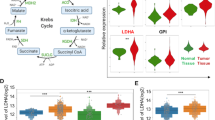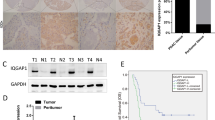Abstract
Protein kinase C delta (PKCδ) is a serine (Ser)/threonine kinase, which regulates numerous cellular processes, including proliferation, differentiation, migration and apoptosis. In the current study, Chinese hamster ovary cells were transfected with either a constitutively activated PKCδ or a dominant negative PKCδ, phosphoprotein enrichment, two-dimensional difference gel electrophoresis and mass spectrometry was combined to globally identified candidates of PKCδ cascade. We found that Bcl-2 associated athanogene 3 (BAG3) was one of the targets of PKCδ cascade, and BAG3 interacted with PKCδ in vivo. In addition, we clarified that BAG3 was phosphorylate at Ser187 site in a PKCδ-dependent manner in vivo. BAG3 has been implicated in multiple cellular functions, including proliferation, differentiation, apoptosis, migration, invasion, macroautophagy and so on. We generated wild-type (WT)-, Ser187Ala (S187A)- or Ser187Asp (S187D)-BAG3 stably expressing FRO cells, and noticed that phosphorylation state of BAG3 influenced FRO morphology. Finally, for the first time, we showed that BAG3 was implicated in epithelial−mesenchymal transition (EMT) procedure, and phosphorylation state at Ser187 site had a critical role in EMT regulation by BAG3. Collectively, the current study indicates that BAG3 is a novel substrate of PKCδ, and PKCδ-mediated phosphorylation of BAG3 is implicated in EMT and invasiveness of thyroid cancer cells.
This is a preview of subscription content, access via your institution
Access options
Subscribe to this journal
Receive 50 print issues and online access
$259.00 per year
only $5.18 per issue
Buy this article
- Purchase on Springer Link
- Instant access to full article PDF
Prices may be subject to local taxes which are calculated during checkout







Similar content being viewed by others
References
Newton AC . Regulation of protein kinase C. Curr Opin Cell Biol 1997; 9: 161–167.
Mischak H, Pierce JH, Goodnight J, Kazanietz MG, Blumberg PM, Mushinski JF . Phorbol ester-induced myeloid differentiation is mediated by protein kinase C-alpha and -delta and not by protein kinase C-beta II, -epsilon, -zeta, and -eta. J Biol Chem 1993; 268: 20110–20115.
Kikkawa U, Matsuzaki H, Yamamoto T . Protein kinase C delta (PKC delta): activation mechanisms and functions. J Biochem 2002; 132: 831–839.
Steinberg SF . Distinctive activation mechanisms and functions for protein kinase Cdelta. Biochem J 2004; 384: 449–459.
Watanabe T, Ono Y, Taniyama Y, Hazama K, Igarashi K, Ogita K et al. Cell division arrest induced by phorbol ester in CHO cells overexpressing protein kinase C-delta subspecies. Proc Natl Acad Sci USA 1992; 89: 10159–10163.
Li C, Wernig F, Leitges M, Hu Y, Xu Q . Mechanical stress-activated PKCdelta regulates smooth muscle cell migration. Faseb J 2003; 17: 2106–2108.
Humphries MJ, Limesand KH, Schneider JC, Nakayama KI, Anderson SM, Reyland ME . Suppression of apoptosis in the protein kinase Cdelta null mouse in vivo. J Biol Chem 2006; 281: 9728–9737.
Lee JH, Takahashi T, Yasuhara N, Inazawa J, Kamada S, Tsujimoto Y . Bis a Bcl-2-binding protein that synergizes with Bcl-2 in preventing cell death. Oncogene 1999; 18: 6183–6190.
Takayama S, Xie Z, Reed JC . An evolutionarily conserved family of Hsp70/Hsc70 molecular chaperone regulators. J Biol Chem 1999; 274: 781–786.
Doong H, Price J, Kim YS, Gasbarre C, Probst J, Liotta LA et al. CAIR-1/BAG-3 forms an EGF-regulated ternary complex with phospholipase C-gamma and Hsp70/Hsc70. Oncogene 2000; 19: 4385–4395.
Chiappetta G, Ammirante M, Basile A, Rosati A, Festa M, Monaco M et al. The antiapoptotic protein BAG3 is expressed in thyroid carcinomas and modulates apoptosis mediated by tumor necrosis factor-related apoptosis-inducing ligand. J Clin Endocrinol Metab 2007; 92: 1159–1163.
Liao Q, Ozawa F, Friess H, Zimmermann A, Takayama S, Reed JC et al. The anti-apoptotic protein BAG-3 is overexpressed in pancreatic cancer and induced by heat stress in pancreatic cancer cell lines. FEBS Lett 2001; 503: 151–157.
Romano MF, Festa M, Pagliuca G, Lerose R, Bisogni R, Chiurazzi F et al. BAG3 protein controls B-chronic lymphocytic leukaemia cell apoptosis. Cell Death Differ 2003; 10: 383–385.
Romano MF, Festa M, Petrella A, Rosati A, Pascale M, Bisogni R et al. BAG3 protein regulates cell survival in childhood acute lymphoblastic leukemia cells. Cancer Biol Ther 2003; 2: 508–510.
Liu P, Xu B, Li J, Lu H . BAG3 gene silencing sensitizes leukemic cells to Bortezomib-induced apoptosis. FEBS Lett 2009; 583: 401–406.
Suzuki M, Iwasaki M, Sugio A, Hishiya A, Tanaka R, Endo T et al. BAG3 (BCL2-associated athanogene 3) interacts with MMP-2 to positively regulate invasion by ovarian carcinoma cells. Cancer Lett 2011; 303: 65–71.
Du ZX, Meng X, Zhang HY, Guan Y, Wang HQ . Caspase-dependent cleavage of BAG3 in proteasome inhibitors-induced apoptosis in thyroid cancer cells. Biochem Biophys Res Commun 2008; 369: 894–898.
Du ZX, Yan Y, Zhang HY, Liu BQ, Gao YY, Niu XF et al. Proteasome inhibition induces a p38 MAPK pathway-dependent antiapoptotic program via Nrf2 in thyroid cancer cells. J Clin Endocrinol Metab 2011; 96: E763–E771.
Du ZX, Zhang HY, Meng X, Gao YY, Zou RL, Liu BQ et al. Proteasome inhibitor MG132 induces BAG3 expression through activation of heat shock factor 1. J Cell Physiol 2009; 218: 631–637.
Iwasaki M, Homma S, Hishiya A, Dolezal SJ, Reed JC, Takayama S . BAG3 regulates motility and adhesion of epithelial cancer cells. Cancer Res 2007; 67: 10252–10259.
Kassis JN, Guancial EA, Doong H, Virador V, Kohn EC . CAIR-1/BAG-3 modulates cell adhesion and migration by downregulating activity of focal adhesion proteins. Exp Cell Res 2006; 312: 2962–2971.
Bozdogan O, Atasoy P, Bozdogan N, Erekul S, Batislam E, Yilmaz E et al. BAG-1 expression in hyperplastic and neoplastic prostate tissue: is there any relationship with BCL-related proteins and androgen receptor status? Tumori 2005; 91: 539–545.
Thiery JP, Acloque H, Huang RY, Nieto MA . Epithelial-mesenchymal transitions in development and disease. Cell 2009; 139: 871–890.
Mitsiades CS, Mitsiades NS, McMullan CJ, Poulaki V, Kung AL, Davies FE et al. Antimyeloma activity of heat shock protein-90 inhibition. Blood 2006; 107: 1092–1100.
Hugo H, Ackland ML, Blick T, Lawrence MG, Clements JA, Williams ED et al. Epithelial--mesenchymal and mesenchymal--epithelial transitions in carcinoma progression. J Cell Physiol 2007; 213: 374–383.
Shi J, Tricot GJ, Garg TK, Malaviarachchi PA, Szmania SM, Kellum RE et al. Bortezomib down-regulates the cell-surface expression of HLA class I and enhances natural killer cell-mediated lysis of myeloma. Blood 2008; 111: 1309–1317.
Zeisberg M, Neilson EG . Biomarkers for epithelial-mesenchymal transitions. J Clin Invest 2009; 119: 1429–1437.
Doong H, Vrailas A, Kohn EC . What’s in the ‘BAG’?--A functional domain analysis of the BAG-family proteins. Cancer Lett 2002; 188: 25–32.
Rosati A, Ammirante M, Gentilella A, Basile A, Festa M, Pascale M et al. Apoptosis inhibition in cancer cells: a novel molecular pathway that involves BAG3 protein. Int J Biochem Cell Biol 2007; 39: 1337–1342.
Pagliuca MG, Lerose R, Cigliano S, Leone A . Regulation by heavy metals and temperature of the human BAG-3 gene, a modulator of Hsp70 activity. FEBS Lett 2003; 541: 11–15.
Rosati A, Leone A, Del Valle L, Amini S, Khalili K, Turco MC . Evidence for BAG3 modulation of HIV-1 gene transcription. J Cell Physiol 2007; 210: 676–683.
Carra S . The stress-inducible HspB8-Bag3 complex induces the eIF2alpha kinase pathway: implications for protein quality control and viral factory degradation? Autophagy 2009; 5: 428–429.
Carra S, Brunsting JF, Lambert H, Landry J, Kampinga HH . HspB8 participates in protein quality control by a non-chaperone-like mechanism that requires eIF2{alpha} phosphorylation. J Biol Chem 2009; 284: 5523–5532.
Carra S, Seguin SJ, Lambert H, Landry J . HSPB8 chaperone activity towards poly-Q containing proteins depends on its association with BAG3, a stimulator of macroautophagy. J Biol Chem 2008; 283: 1437–1444.
Huber MA, Kraut N, Beug H . Molecular requirements for epithelial-mesenchymal transition during tumor progression. Curr Opin Cell Biol 2005; 17: 548–558.
Arias AM . Epithelial mesenchymal interactions in cancer and development. Cell 2001; 105: 425–431.
Gamerdinger M, Carra S, Behl C . Emerging roles of molecular chaperones and co-chaperones in selective autophagy: focus on BAG proteins. J Mol Med 2011; 89: 1175–1182.
Gamerdinger M, Hajieva P, Kaya AM, Wolfrum U, Hartl FU, Behl C . Protein quality control during aging involves recruitment of the macroautophagy pathway by BAG3. EMBO J 2009; 28: 889–901.
Yook JI, Li XY, Ota I, Hu C, Kim HS, Kim NH et al. A Wnt-Axin2-GSK3beta cascade regulates Snail1 activity in breast cancer cells. Nat Cell Biol 2006; 8: 1398–1406.
Brabletz T, Jung A, Hermann K, Gunther K, Hohenberger W, Kirchner T . Nuclear overexpression of the oncoprotein beta-catenin in colorectal cancer is localized predominantly at the invasion front. Pathol Res Pract 1998; 194: 701–704.
Gavert N, Ben-Ze’ev A . beta-Catenin signaling in biological control and cancer. J Cell Biochem 2007; 102: 820–828.
Fan J, Guan S, Cheng CF, Cho M, Fields JW, Chen M et al. PKCdelta clustering at the leading edge and mediating growth factor-enhanced, but not ecm-initiated, dermal fibroblast migration. J Invest Dermatol 2006; 126: 1233–1243.
Haynes J, Srivastava J, Madson N, Wittmann T, Barber DL . Dynamic actin remodeling during epithelial-mesenchymal transition depends on increased moesin expression. Mol Biol Cell 22: 4750–4764.
Acknowledgements
This work was supported by National Natural Science Foundation of China (31070697 and 31170727), Program for LNET (LJQ2011083) and Foundation of Liaoning Educational Committee (L2010561) to H-Q Wang.
Author information
Authors and Affiliations
Corresponding author
Ethics declarations
Competing interests
The authors declare no conflict of interest.
Additional information
Supplementary Information accompanies the paper on the Oncogene website
Rights and permissions
About this article
Cite this article
Li, N., Du, ZX., Zong, ZH. et al. PKCδ-mediated phosphorylation of BAG3 at Ser187 site induces epithelial−mesenchymal transition and enhances invasiveness in thyroid cancer FRO cells. Oncogene 32, 4539–4548 (2013). https://doi.org/10.1038/onc.2012.466
Received:
Revised:
Accepted:
Published:
Issue Date:
DOI: https://doi.org/10.1038/onc.2012.466
Keywords
This article is cited by
-
Superbinder based phosphoproteomic landscape revealed PRKCD_pY313 mediates the activation of Src and p38 MAPK to promote TNBC progression
Cell Communication and Signaling (2024)
-
Discovery of a signaling feedback circuit that defines interferon responses in myeloproliferative neoplasms
Nature Communications (2022)
-
ERK-mediated phosphorylation of BIS regulates nuclear translocation of HSF1 under oxidative stress
Experimental & Molecular Medicine (2016)
-
The critical role of HMGA2 in regulation of EMT in epithelial ovarian carcinomas
Tumor Biology (2016)
-
Depletion of BIS sensitizes A549 cells to treatment with cisplatin
Molecular & Cellular Toxicology (2016)



